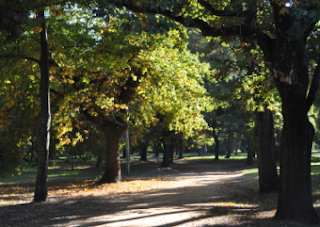Christmas is a time that makes demands on our time, money
and energy, and it can leave people feeling stressed, worried about what to do/
how to cope/ how to please everyone, drained, frustrated and even lonely or
angry. All of which is the opposite to the social hype about how we are
supposed to feel – happy, excited and full of cheer and expectations.
In my Women’s Support Group we usually had a session
focussed on the difficulties that can occur over the festive season and how we
might minimise or survive through these difficulties – and there are a number
of areas.
Mental health/ stress
Handling this can be a combination of planning early to do
some things like sending cards and buying and wrapping presents, and of making
time for relaxation and stress management strategies (e.g. slowing down
breathing, positive self-talk, playing relaxing background music and talking to
people about our problems).
Here is a useful handout from the Better Health Channel:
https://www.betterhealth.vic.gov.au/health/healthyliving/christmas-tips-to-reduce-the-stress
https://www.betterhealth.vic.gov.au/health/healthyliving/christmas-tips-to-reduce-the-stress
Physical exhaustion
This is a time where we need to consciously make time for
rest and relaxation (despite the pressures) and to get enough sleep.
Financial
And
then specifically in relation to gifts, we used this table to prompt some
thoughts and ideas:
It is not necessary to purchase expensive gifts (many are
returned to stores after Christmas), and those that have a little more thought,
effort and personal touch put into them
are often appreciated more.
There are many ideas on the internet for making and/or purchasing budget gifts. Here are some:
Exercise
It can be tempting to do a lot of sitting over the festive
season and to forget our usual exercise routines. We need to try to stay active
– good conversations can be had whilst walking and resurrecting the family
backyard cricket game (or other outside activities) can be a useful thing to
do. Better still, if conditions are suitable, why not try flying kites (guaranteed
to bring lots of laughter). And for those who have snow, the possibilities are
even wider still.
Food and drinks
It is possible to substitute healthier options for a number
of popular foods and drinks.
Here is a list of healthy food substitutes from the Mayo Clinic:
http://www.mayoclinic.org/healthy-lifestyle/nutrition-and-healthy-eating/in-depth/healthy-recipes/art-20047195
Here is a list of healthy food substitutes from the Mayo Clinic:
http://www.mayoclinic.org/healthy-lifestyle/nutrition-and-healthy-eating/in-depth/healthy-recipes/art-20047195
Relationships
We need to be realistic about these – someone who has always
irritated us, been a game player or been difficult will be no different at this
time. We can try to avoid known triggers in conversations and use boundaries
and escapes if needed. We may need to give ourselves permission not to stay in
unsafe/ uncomfortable situations and it is good to plan to spend most time with
people with whom we are comfortable.
Remember: if we step outside the commercial fast lane and concentrate on the real reason for the season, there we may find peace.




















































